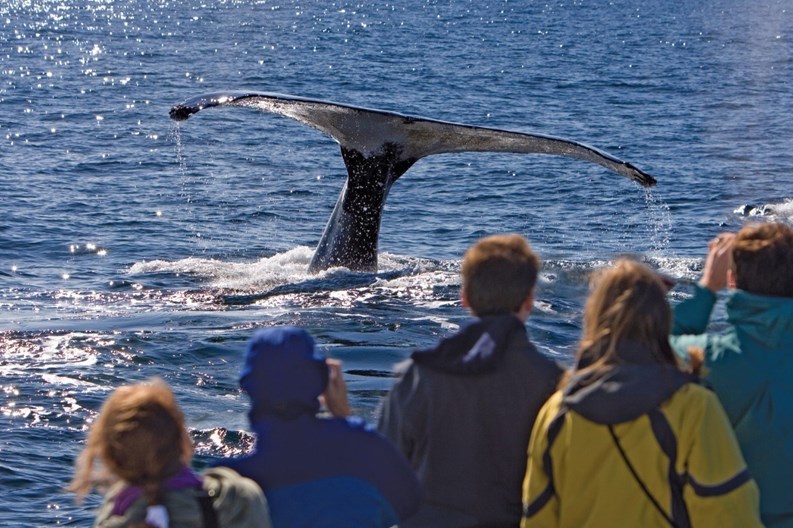Pop quiz: Where did the Pilgrims first land in America?
Plymouth, you say? No, actually –Plymouth may have the rock, but Provincetown, Massachusetts, is actually where the Mayflower first dropped anchor. In fact, Provincetown is the site where the Mayflower Compact, considered the first democratic document ever written in America, was drawn up and signed in 1620.
Located at the very tip of Cape Cod, Provincetown has been attracting travelers long before there was ever a tourism industry. Besides the Pilgrims, some early visitors included Vikings, English explorers, pirates, and native Americans. In fact, ancient artifacts found at archaeological sites indicate human presence along Cape Cod as early as 10,000 years ago.
Today, Provincetown is a tourist Mecca famous for its beaches, vibrant arts scene, and large gay community. It’s an “eclectic small city and a fishing village,” says Candice Collins-Boden, executive director of the Provincetown Chamber of Commerce. Visitors can spend a day sunning themselves at Herring Cove or touring the town’s five museums – including one housing an actual pirate ship. (The Whydah, which went down in a storm in 1717, is the only pirate vessel ever found off the Cape. It was discovered in 1984, complete with sunken treasure.)
Provincetown is home to both America's first town meeting – the famed form of local government still vital in New England today – and the oldest operating arts colony in the United States.
Whaling Out, Whale Watching In
While whale watching has replaced whaling these days, a small fishing fleet still operates out of MacMillan Pier, helping connect Provincetown with its past. “When fishing was huge, tourism was very small,” says Collins-Boden. “Now tourism is huge, and fishing is small.”
Today, tourism is far and away Provincetown’s main industry, makingup 90 percent of the local economy. In fact, there are 1,800 tourist accommodations – ranging from condominiums to rented rooms – located just in Provincetown and neighboring North Truro. But the flavor of old Provincetown can still be seen in the picturesque cottages and colonial-style homes lining its narrow streets.
Provincetown’s small size – it is three miles long and half a mile wide – and its desirable location mean that housing prices are still high, even during the current recession. In 2008, the median price for a condominium was $365,000, and the median price for a home was $729,000. There are just under 3,900 dwellings in Provincetown – including condominiums and multifamily dwellings –and more than 60 percent of them are second homes.
The town’s year-round population stands at 3,500 residents, but that balloons during high season up to 60,000, including workers in the touristindustry and summer residents who come to partake of the town’s vibrant cultural offerings and sun-warmed dunes.
That disparity can make it difficult to get an accurate economic picture of residents. For example, while the median income according to the 2000 Census was $32,719 (below the national average of $41,994), that number does not take into account the large seasonal population. The town has one elementary and one high school to educate its approximately 200 school-age children. The open town meeting, which has its roots in the signing of the Mayflower Compact, is still the local form of governance.
Provincetown (or “P-town,” as it’s affectionately known) can be accessed by land, sea, or air. Route 6 runs all the way out to the tip of the peninsula, while daily ferries take travelers to Boston and Plymouth. Provincetown even boasts its own airport and airline, Cape Air.
Unlike many other coastal areas, the Cape’s natural beauty has been largely untouched by high-rise hotels and beachfront condominiums. The Cape Cod National Seashore Park, which President John F. Kennedy founded in 1961, preserved 43,500 acres of the area's dunes, beaches, and forests, including 40 miles of seashore. Today, the national park draws some 4 million tourists a year. “Even when things are in a downslide, Provincetownseems to hang in there pretty well,” says Collins-Boden. In spring and fall, an average of 1,200 visitors a day head out to Stellwagen Bank for glimpses of humpback, fin, and the rare right whale. Collins-Boden says Provincetown is not only the closest location to the feeding grounds for whale-watching, it's also where the pastime originated in 1975.
Ties to the Sea
Life in Provincetown has always been tied to the sea. “Native Americans [such as the Nauset tribe] would come to this area to plant gardens or shellfish – much as we vacation here today,” says Laurel Guadazno, a historian at Pilgrim Monument and Provincetown Museum. (The monument, which was dedicated in 1910, is by far the tallest structure in the town. It stands 255 feet tall and claimsto be the “tallest granite structure in the U.S.”) “They would come here and have temporary settlements. Nothing permanent has been found.”
After the Pilgrims took off for Plymouth in December of 1620, Provincetown remained unpopulated until 1700. During the 18th century, people would visit the Cape to fish, but only about 200 people called Provincetown home year-round. The town was incorporated in 1727, but its main thoroughfare, Commercial Street, wasn't even built until 1823. Before that, when people wanted to get around, they used the beach. “It really was the first street,” says Guadazno. “People had dories. When you wanted to visit your friend, you would get in your boat and head out.”
During the 19th century, the whaling and fishing industries took off – and the population of the town grew exponentially. Provincetown boasted the third-largest whaling harbor (after Nantucket and New Bedford), but salt cod was really where a lot of people made their fortunes, Guadazno explains. By 1875, more vessels were operating out of Provincetown than any other Massachusetts community, including Boston.
During that time, Portuguese sailors from Cape Verde and the Azores Islands, hired to work on the U.S. ships, moved into town and added their traditions to the local culture and cuisine. Then, in 1898, the Portland Gale blew away half the town’s wharves, and Provincetown began to turn to the nascent tourism industry to replace the jobs destroyed by the storm.
Artist Magnet
Also in 1898, the Impressionist painter Charles Hawthorne came to Provincetown and founded the Cape Cod School of Art – the oldest operating art colony in the United States. Other famous artists who set up their easels on the Cape include the great art teacher Hans Hoffmann and modern artists Jackson Pollock and William de Kooning. The Provincetown Art Association and Museum, which houses notable local works from Hawthorne today, became the first museum in the country to receive a Leadership in Energy & Environmental Design (LEED) certification from the U.S. Green Building Council in Washington.
Provincetown also boasts three acting troupes, the New Provincetown Players, Shakespeare on the Cape, and the Gold Dust Orphans. The original Provincetown Players, founded by Pulitzer Prize-winning author Susan Glaspell (“Trifles”) and Nobel Prize-winning playwright Eugene O’Neill, are famous for being the first to ever perform the iconic 20th century playwright’s works. In 1916, O’Neill is said to have arrived for the summer with a trunk loaded with plays. “Bound East for Cardiff” was the first one produced, but The Provincetown Players went onto perform many of his early works.
O'Neill isn't the only famous playwright to have summered on the Cape. Visitors can still see the shed where Tennessee Williams spent the summer of 1944 revising “The Glass Menagerie.” “He needed a quiet place to write,” says Guadazno.
Other writers who have called Provincetown home include former Poet Laureate Stanley Kunitz and Pulitzer Prize winners Mary Oliver and Norman Mailer. Most recently, Annie Dillard set her well-regarded 2007 novel, “The Maytrees,” on Provincetown. Before Mailer died last year, he requested that his home be turned into a writer's colony. This spring, the Norman Mailer Writers’ Colony opened its doors as a place where fiction and nonfiction writers can “explore the spooky art of writing,” as Mailer put it.
1960s Growth
In the late 1960s, the counterculturemovement discovered Provincetown, and was attracted to both its natural beauty and then-affordable property prices. The town’s population grew to an estimated 4,200 residents at that time. In 1978, the Provincetown Business Guild was founded and represents the business interests of the town’s large gay community.
Not surprisingly for a town that boasts quirky movie director John Waters (“Hairspray”) among its summertime residents, Provincetown also has a strong emphasis on independent filmmaking. The Province-town International Film Festival has developed a well-regarded reputation for its commitment to showcasing independent films during its 11 years. Recent honorees include Quentin Tarantino, Jane Lynch, and Gael Garcia Bernal.
With an army of tourists to feed, Provincetown boasts an impressive arrayof restaurants – all locally owned, according to the Chamber of Commerce. The eclectic shopping options, with an emphasis on small art galleries and handmade crafts, are also far more numerous and upscale than one would typically expect to find in a town of its size. (During the high season, every Friday night is “opening night” at the galleries.)
With its “Vikings, Pilgrims, pirates, painters, and poets,” Provincetown offers plenty of color and history to both visitors and residents, says Collins-Boden. Besides, she adds, “Where else can I look out my window and see a whale tail?”
Yvonne Zipp is a freelance writer from Kalamazoo, Michigan.







Leave a Comment